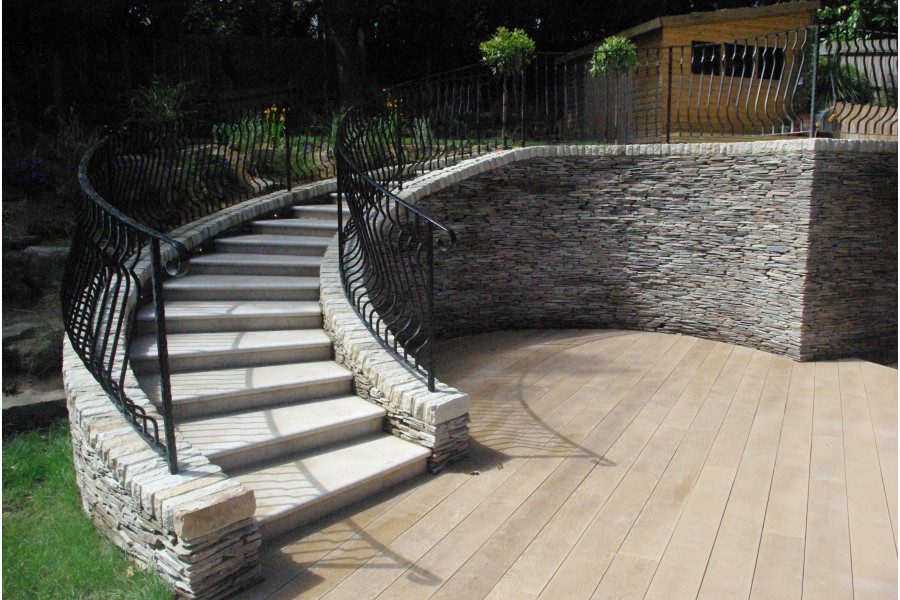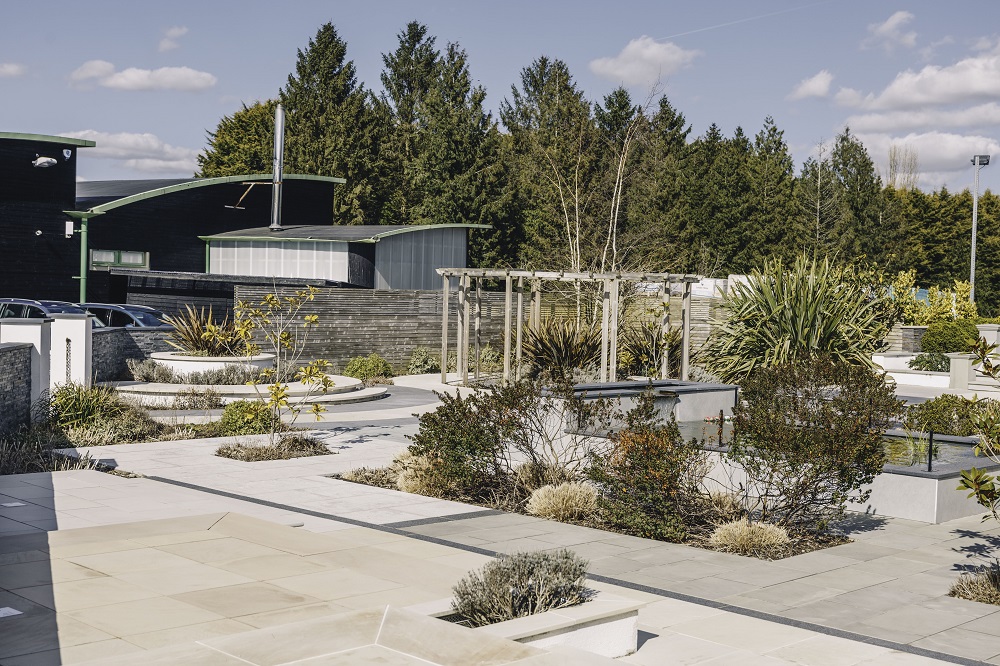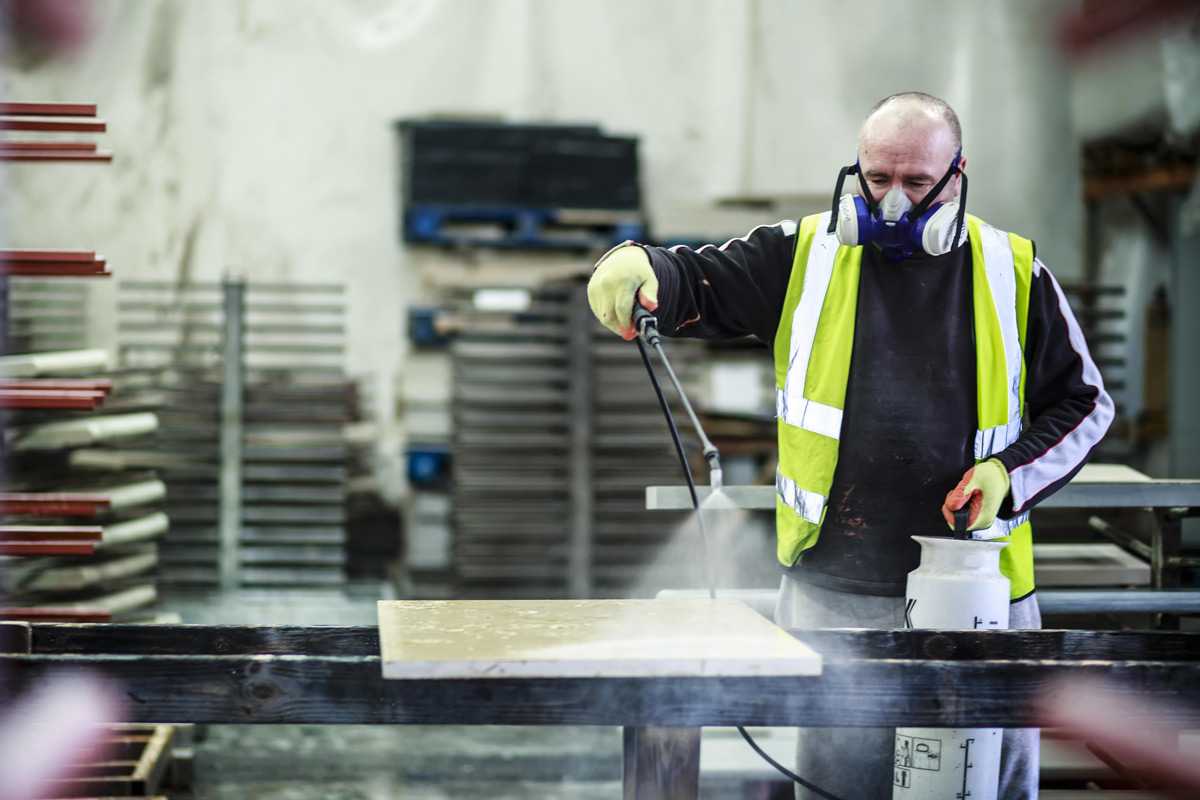Confused by patio paving options? We explain the difference between riven and sawn paving, and what you need to know to choose the right one for you.
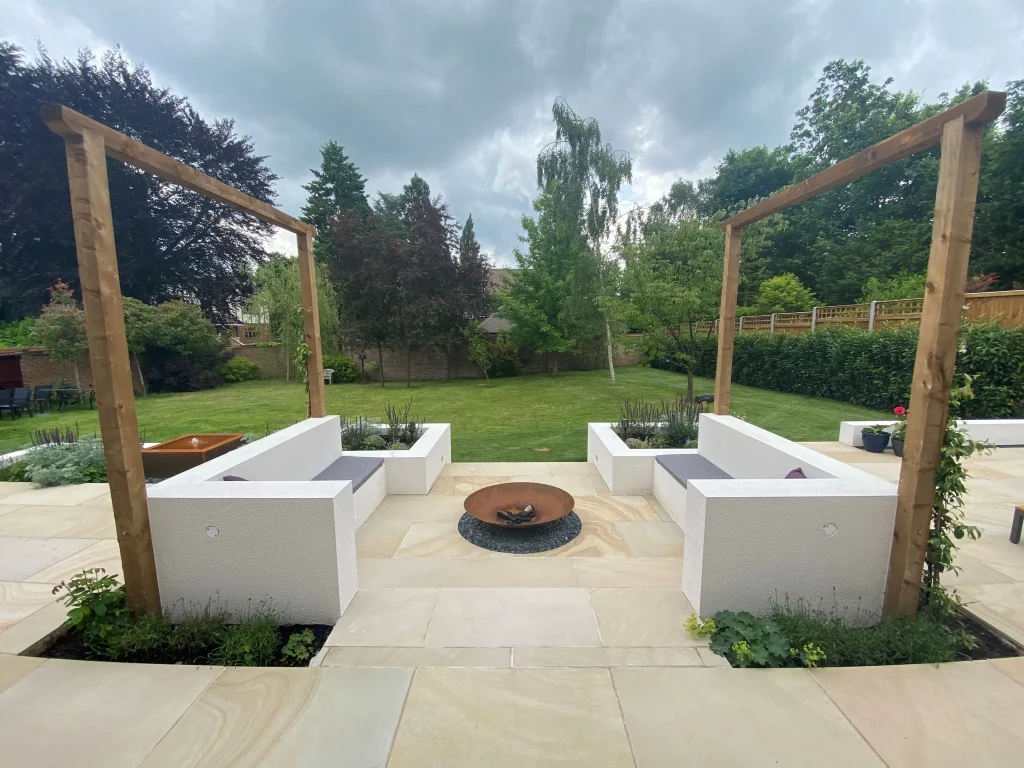
Riven paving
London Stone have always specialised in contemporary paving and we are regularly asked, What is sawn paving? When Indian sandstone paving first came on to the market in the early 1990s, it was only available in the standard riven finish. Riven stone is naturally split along fault lines. This results in a naturally uneven surface.
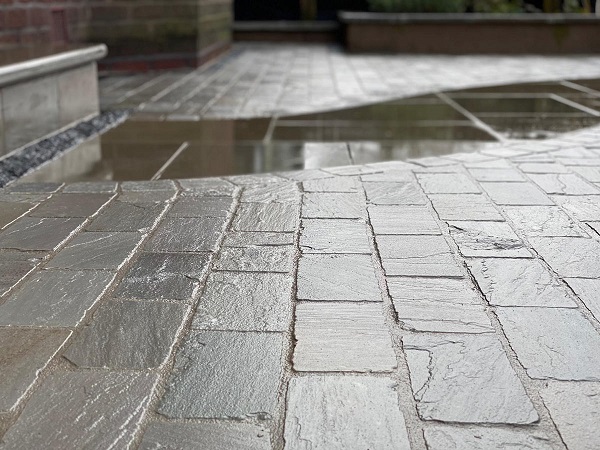
Smooth paving
When paving is sawn, rather than being split naturally along the fault line, it's cut straight off the quarried block, or scant, in large slabs. These slabs are then cut down, to the required finished paving size. Generally all six sides are sawn. Slab sizes are cut to a tolerance of +2/-2mm on each dimension of width, length and depth.
Usually, but not always, a surface finish is then applied. The finish creates a honed, sandblasted, flamed or brushed surface and is done for practical purposes as much as aesthetics.
Sawn paving is also known as smooth paving. This doesn't mean the paving is slippery. All outdoor paving is required to meet British standards on slip resistance. The finish that is applied to sawn paving is often used to add slip resistance. Paving slabs such as Harvest sandstone, which are left sawn and don't have a finish applied, possess a natural slip resistance.
Advantages of sawn paving slabs
Pointing can be done more quickly and efficiently with sawn slabs. A machine-cut edge offers a more consistent even surface to strike against. The pointing mix can be more easily compacted giving a denser pointing mix which will last longer.
The larger tolerance on slabs sizes for riven stone - which can result in slab dimensions differing by up to 10mm - can make it more time consuming to create a neat finish
Sawn paving options
Although customers are increasingly aware of natural stone paving, the differences between the various types of stone paving are less well known. Since the boom in popularity of garden paving in the 1990s saw the start of large-scale imports of Indian sandstone paving, many different types of stone paving are now available.
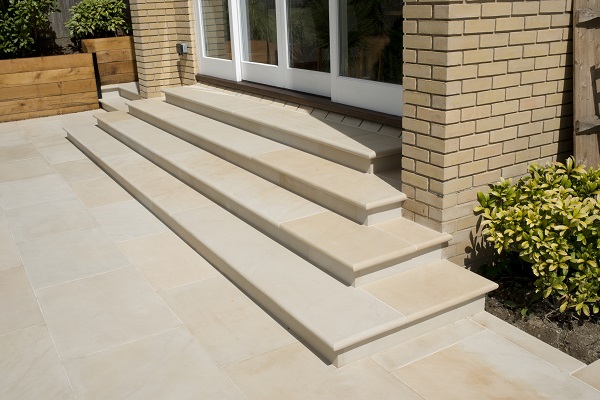
Sawn sandstone and limestone
A huge range of colours exists in these two natural stone pavings, making them a very popular choice. Those with less colour variation, such as Beige sandstone, are particularly favoured for contemporary designs. Their sawn edges and smooth surface are particularly suitable for minimalist gardens.
It is advisable to seal sawn sandstone and limestone. This is because sawing opens up pores in the paving and makes it more vulnerable to staining.
Sawn granite
Granite is, however, an extremely dense paving. Often it requires a flamed finish to give it the required slip resistance, with the benefit that this brings out the beauty of the stone at the same time. Sawn granite has a very low porosity - as little as 0.06% for Dark Grey - and so there is no need to seal.
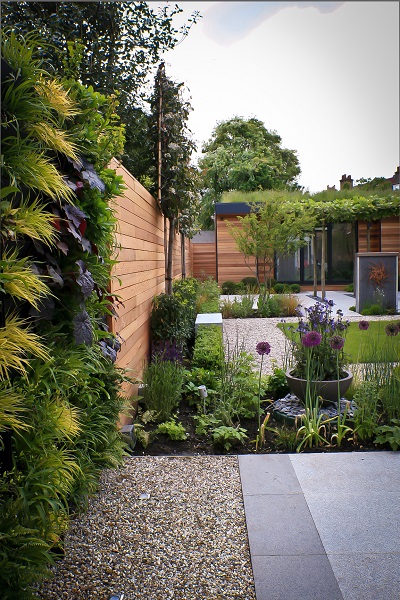
Planks and setts
There's no need to stick with square or rectangular paving slabs. Sawn paving is also available as planks and setts. This extends your design options. Find out more about designing with planks.
Sawn steps and coping
And there's nothing better than a smart finishing touch. When used for steps and coping, sawn slabs require an edge profile and the curve of a bullnose edge, available as standard on our steps, makes a great complement to the smooth, sawn surface finish. This is a prime difference between riven steps and sawn steps, as the standard offering for riven is a hand-cut, rock-faced, edge. However, whatever your steps, why not consider a bespoke edge for a design that's all yours?
Discover our large range of smooth paving.
Post updated: May 2023



